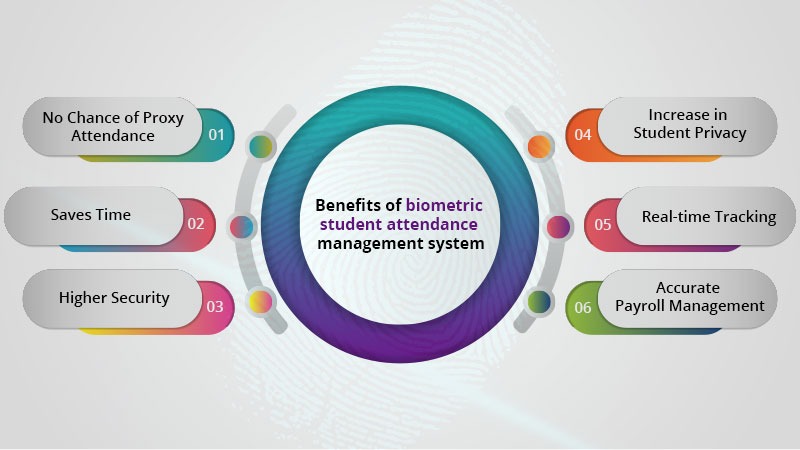Biometric Attendance: The Pros and Cons of Implementing Biometric Attendance Management Systems

Introduction
The advent of biometric technology has carved a noteworthy impact across various industries, prominently including the realm of employee attendance tracking. A biometric attendance management software promises heightened accuracy and security but also presents certain challenges that organizations must navigate through.
Pro: Enhanced Accuracy and Fraud Prevention
Implementing a biometric attendance management system offers:
Minimization of Time Theft and Buddy Punching
Precise and Unbiased Attendance Data
Reliability through Physical Attribute Verification
Con: Potential Technical Glitches
Despite their precision, biometric systems:
Might Encounter Hardware or Software Issues
Can Exhibit Inaccuracies with Physical Changes in Users
May Require Frequent Updates and Maintenance
Pro: Seamless Integration with Payroll Systems
Biometric attendance smoothly collaborates with payroll processing:
Ensuring Accurate Remuneration Based on Precise Work Hours
Facilitating Efficient Data Transfer to Payroll Systems
Simplifying Compliance with Labor Laws and Regulations
Con: Privacy and Ethical Concerns
On the flip side, these systems might:
Raise Concerns Over Employee Privacy
Possess Potential for Misuse of Biometric Data
Encounter Resistance from Employees on Ethical Grounds
Pro: Time Efficiency and Reduced Administrative Work
Biometric systems promise operational efficiency by:
Automating Attendance Tracking, Reducing Manual Effort
Minimizing Discrepancies and Ensuring Timely Attendance Logging
Allowing HR and Admin Teams to Focus on Strategic Tasks
Con: Initial Investment and Setup Challenges
However, organizations might grapple with:
A Considerable Initial Investment in Hardware and Software
Potential Challenges in System Setup and Employee Training
Ensuring Consistent Functionality Across Various Departments or Locations
Pro: Enhanced Security
Leveraging biometric data ensures:
Restriction of Access to Authorized Personnel Only
Enhanced Security of Physical and Digital Assets
Reduced Risk of Security Breaches and Unauthorized Access
Con: Data Security and Compliance Challenges
The security of stored biometric data is paramount, posing challenges like:
Ensuring Robust Data Protection Mechanisms
Compliance with Global Data Protection Regulations
Addressing Concerns Pertaining to Data Storage and Transmission
Navigating Through the Implementation of Biometric Systems
Pros of Biometric Attendance Management Systems
Accuracy: Biometric systems offer high accuracy in attendance tracking. It is nearly impossible for employees to clock in on behalf of a colleague, eliminating the issue of “buddy punching.”
Enhanced Security: Biometric data is unique to each individual, making it extremely difficult to forge or misuse. This significantly enhances security and deters fraudulent practices.
Elimination of Proxy Attendance: With biometric systems, employees must be physically present to clock in, eliminating the possibility of proxy attendance or time theft.
Contactless Solutions: In the wake of the COVID-19 pandemic, contactless solutions have become more critical. Many biometric systems offer touchless or contactless options, reducing the risk of disease transmission.
Efficiency: Biometric systems are quick and efficient, reducing the time and effort required for manual attendance recording. Employees can clock in and out with a simple scan, streamlining the process.
Data Privacy: Biometric systems often come with robust data encryption and security measures to protect employees’ biometric data, ensuring compliance with data privacy laws.
Integration: Many biometric systems can be seamlessly integrated with other HR and payroll systems, simplifying data transfer and payroll processing.
Successfully implementing a biometric attendance management system entails:
Thoroughly Weighing Pros and Cons
Ensuring Robust Data Security and Compliance
Facilitating Open Communication with Employees Regarding Changes
Providing Adequate Training to Ensure Smooth Adoption
Conclusion: A Balancing Act of Biometric Attendance Management
The incorporation of a biometric attendance management system presents a dichotomy of advanced security & efficiency and potential challenges & ethical considerations. While the elimination of fraudulent practices and the promotion of a transparent work environment stand out as noteworthy benefits, concerns related to privacy, data security, and initial investment cannot be ignored. It’s a balancing act, where organizations must intricately navigate through the potential pitfalls, ensuring that the implementation of such advanced technology is in alignment with their organizational ethos, employee expectations, and legal compliance. In this tech-forward era, it becomes imperative to merge technological advancements with human-centric practices, ensuring that the path treaded upon is not merely efficient but also ethically and legally sound. Thus, as we embrace biometric technology, a mindful, transparent, and ethically guided approach will pave the way toward a future where technology and human practices coexist harmoniously.




